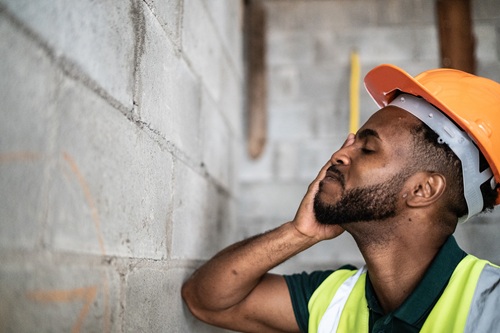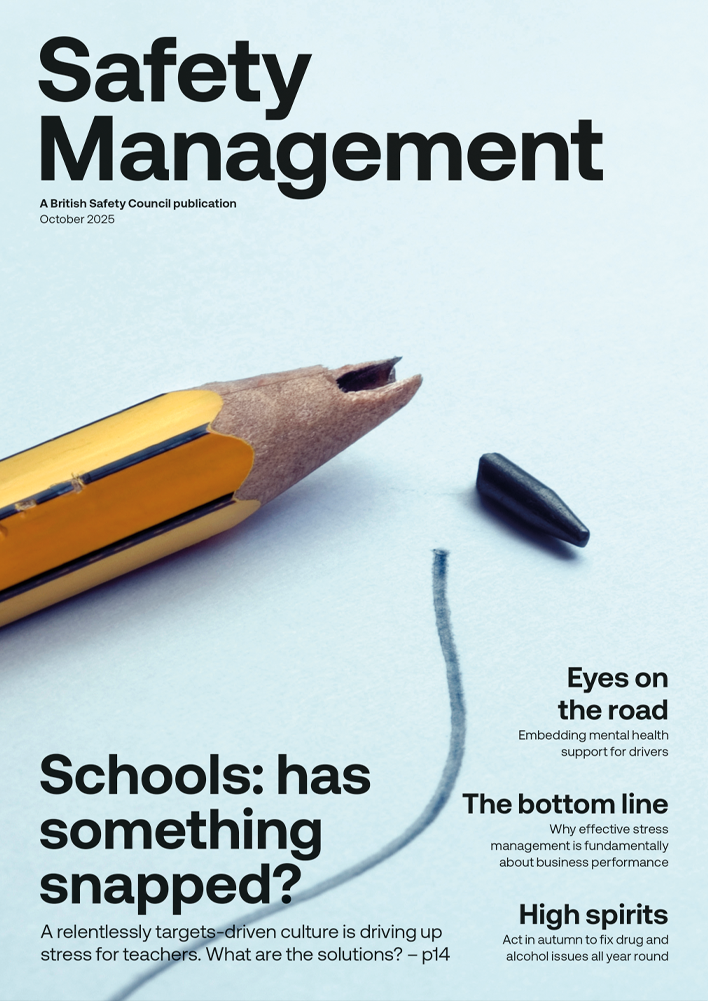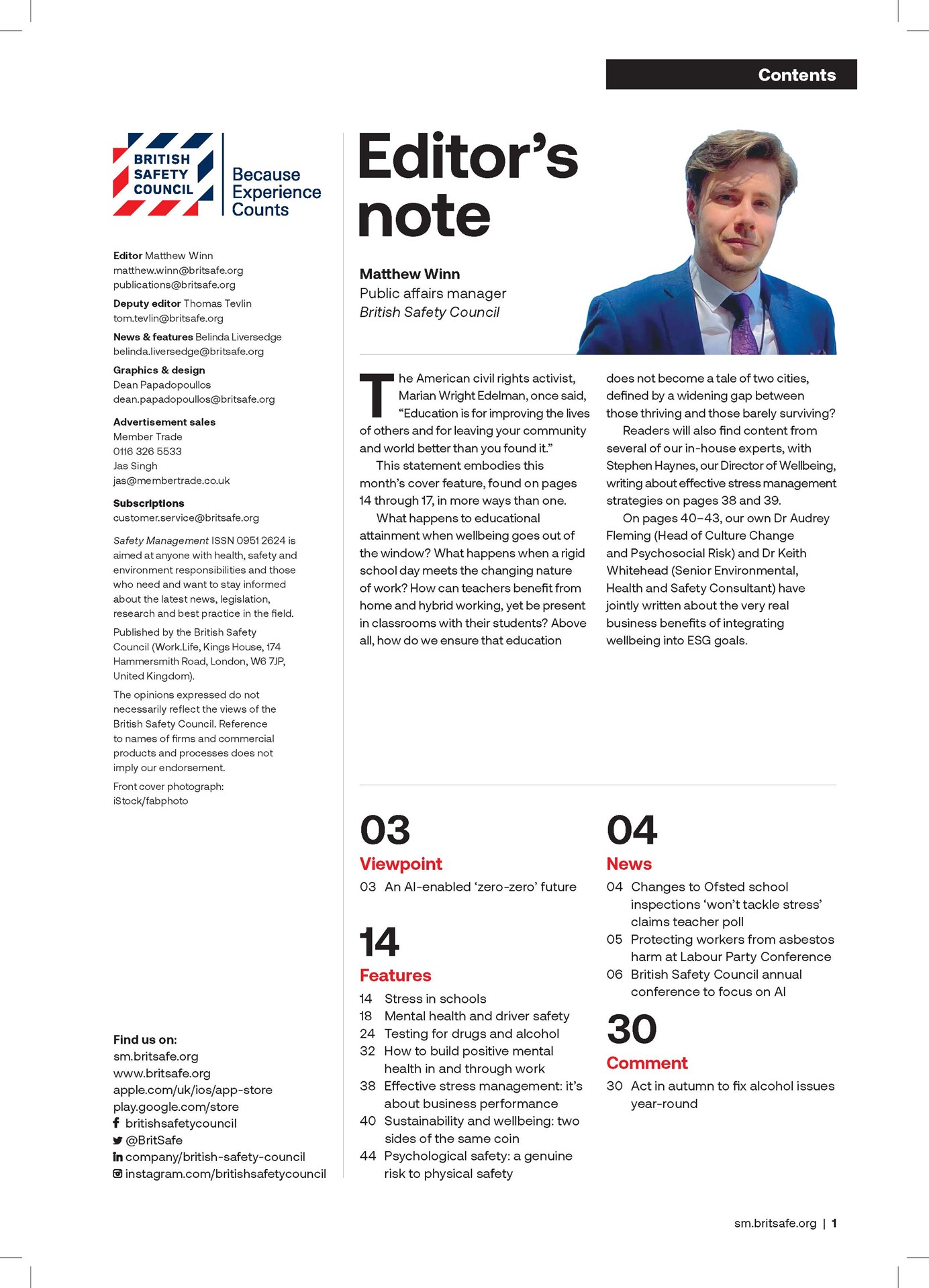The British Safety Council’s Five Star Occupational Health and Safety Audit has been revised and updated to place a greater emphasis on assessing how effectively an organisation is managing risks to workers’ health and wellbeing.
Features
Five Star Audit specifications updated for 2019/2020
The change is one of a number of enhancements and updates to the Five Star Occupational Health and Safety Audit that will apply to all audits conducted from 5 August 2019 onwards. Other significant changes include:
- New elements of occupational health, safety and wellbeing management that will be assessed during the audit where applicable
- New statements providing summaries of the best practice approaches to the management of occupational health, safety and wellbeing risks that the auditor will expect to see
- New benchmarking data showing the lowest, highest and average scores achieved by all organisations in the various elements and best practice indicators of the audit – allowing organisations to compare their general performance in these areas to other businesses
- New benchmarking data on the management of risks to worker wellbeing – this will allow organisations to compare their general performance in managing aspects of worker wellbeing against other organisations.
 Changes will apply to all Five Star audits conducted from 5 August 2019 onwards
Changes will apply to all Five Star audits conducted from 5 August 2019 onwards
The Five Star Health and Safety Audit is an in-depth examination of the effectiveness of an organisation’s entire health and safety management system and associated arrangements. The audit assesses the organisation’s health and safety policies, processes and practices against the latest legislation, recognised standards and best practices, and provides an overall score and rating for the effectiveness of the approach. It also highlights strengths in the organisation’s health and safety management system and provides detailed recommendations for improving the management of risks to health, safety and wellbeing at work, where appropriate.
Greater focus on worker wellbeing
James Lewis, head of audit and consultancy at the British Safety Council, said: “In recent years there has been a growing recognition among employers of the benefits of taking action to improve the health and wellbeing of their workers.
“Employers increasingly understand that healthy and motivated workers are more likely to stay with the organisation for longer, be more engaged and unlock discretionary effort – making organisations more productive.
“For example, many organisations are now assessing what effect the organisation is having on their stakeholders’ mental and physical health, and how the health of these stakeholders affects the organisation. We’ve seen organisations identify that their workforce is feeling lonely and struggling to get enough quality sleep. We’ve also seen organisations identify that a high proportion of staff are at high risk of cardiovascular disease due to sedentary work and obesity.
 The Five Star Health and Safety Audit now involves a much closer assessment of how effectively an organisation is managing all aspects of worker wellbeing
The Five Star Health and Safety Audit now involves a much closer assessment of how effectively an organisation is managing all aspects of worker wellbeing
“The Five Star Health and Safety Audit therefore now involves a much closer assessment of how effectively an organisation is managing all aspects of worker wellbeing. This includes mental and physical health, lifestyle, workplace relationships and culture and workplace design.
“Employers who have achieved the greatest success in improving the health and wellbeing of their staff have fully integrated and embedded their wellbeing policies and strategies across all areas and aspects of the business. This includes strategic decisions such as new processes, business growth and expansion.
“This means that all departments and levels of the workforce are involved in developing and implementing measures to ensure good worker wellbeing – not just the human resources and health and safety teams.
“Organisations wishing to score highly in the Five Star Health and Safety Audit will therefore need to demonstrate a suitable and effective approach for improving worker wellbeing that is embedded throughout the business.”
Best practice statements
The Five Star Occupational Health and Safety Audit specification now includes ‘best practice statements’. These provide a summary of the kind of measures organisations should be taking to achieve excellent management of health, safety and wellbeing risks in line with the various aspects of health, safety and wellbeing that are examined during the audit.
James explains: “The statements set out best practice approaches to managing health, safety and wellbeing risks that the auditor will expect to see.
“They are based in part on successful approaches to managing health, safety and wellbeing risks that we have identified during our many years of working with companies of all sizes and sectors, both in the UK and internationally.
“The audit report will therefore set out how well the organisation is performing in comparison to these best practice approaches.”
Benchmarking data
From now onwards, organisations that undergo the Five Star Occupational Health and Safety Audit will also receive more detailed benchmarking data. This will allow them to compare both their general approach to and performance in managing risks to workers’ health, safety and wellbeing against other audited companies.
 The use of technology assessment element will not be scored, but will indicate if technology is improving management of risks to safety, health and wellbeing
The use of technology assessment element will not be scored, but will indicate if technology is improving management of risks to safety, health and wellbeing
The audit report will set out the lowest, average and highest scores achieved in the audit’s six ‘best practice indicators’ and four audited ‘sections’.
James says: “The best practice indicators and four audited sections examine key aspects and approaches for the effective management of health, safety and wellbeing risks. So the new scoring system will allow organisations to make general comparisons of their approach and performance in these areas in relation to others.
“As workplace wellbeing is now increasingly a key focus of the audit, we also intend to publish data on the type of approaches to managing wellbeing revealed by the Five Star Health and Safety audits conducted during the 2019/20 cycle.
“We intend to release this in summer 2020 and hope it will provide businesses with useful information on the type of wellbeing programmes that are being adopted by businesses globally. We also hope it will provide a general indication of the audited companies’ effectiveness in improving worker wellbeing.”
New ‘unscored’ technology element of the audit
From August 2019, the Five Star Occupational Health and Safety Audit will also assess a new, specific aspect of an organisation’s approach to managing health, safety and wellbeing at work. This is in anticipation of emerging risks to people’s health, safety and wellbeing at work and the most effective ways of dealing with them.
 A pop up workplace 'happiness' event encouraged people to hold a puppy for wellbeing. The new five star audits will aims to publish data on approaches to managing wellbeing revealed by the Five Star Health and Safety audits conducted during the 2019/20 cycle
A pop up workplace 'happiness' event encouraged people to hold a puppy for wellbeing. The new five star audits will aims to publish data on approaches to managing wellbeing revealed by the Five Star Health and Safety audits conducted during the 2019/20 cycle
James explains: “The Five Star Health and Safety Audits carried out during the 2019-2020 cycle will now assess the use of technology in a business in relation to managing occupational health, safety and wellbeing risks. For example, the audit will consider whether the introduction or use of technology has created new risks to workers’ health, safety and wellbeing and how effectively the organisation is managing those risks.
“The audit will also consider whether technology has been used by the organisation to improve the management of risks to workers’ health, safety and wellbeing and the effectiveness of the approach.
“The audit report will highlight strengths and weaknesses in these areas, including recommendations for improvement.
“However, the Use of Technology assessment element will not be scored and the results will not contribute to the organisation’s overall score and grade in the audit.
“The British Safety Council hopes that this new focus on the use of technology will encourage businesses to consider the potential risks to workers’ health, safety and wellbeing from emerging technological changes. We also hope that it will encourage businesses to consider ways in which technology can be used to improve the health, safety and wellbeing of people at work.
“The risks from technology and how technology can be used to keep workers safe and healthy may also be assessed in more detail in future revisions to the Five Star Occupational Health and Safety Audit.
“Therefore, this new ‘unscored’ element will begin to prepare businesses for possible changes to the audit from 2020 onwards.”
The new focus on assessing the organisation’s approach to worker wellbeing; the new best practice statements; the provision of new benchmarking data; and the unscored Use of Technology assessment have also been incorporated into the Five Star Integrated Safety, Health and Environmental Audit.
This combines all the features and primary components of the Five Star Occupational Health and Safety and Environmental Sustainability Audits into a single audit.
There are also some changes to the Five Star Environmental Sustainability Audit.
FEATURES

Sustainability and worker wellbeing: two-sides of the same coin
By Dr Audrey Fleming and Dr Keith Whitehead, British Safety Council on 07 October 2025
Businesses increasingly understand the benefits of integrating their approach to worker wellbeing with their sustainability goals – and there are some practical, low-cost and simple ways of achieving this.

Psychological safety: a genuine risk to physical safety
By David Head, Dräeger Safety UK and Ireland on 03 October 2025
A ‘psychologically safe’ workplace where employees feel confident and comfortable speaking up to raise concerns, ask for help and admit mistakes has been shown to make it easier to support worker wellbeing and achieve better management of safety risks, and there are some simple ways of fostering such an environment.

How to build positive mental health in and through work
By Sam Downie, Mates in Mind on 02 October 2025
With World Mental Health Day taking place on 10 October, now is an ideal time for employers to review their approach to supporting employee mental health, focusing on creating a culture of prevention before people reach crisis point.



